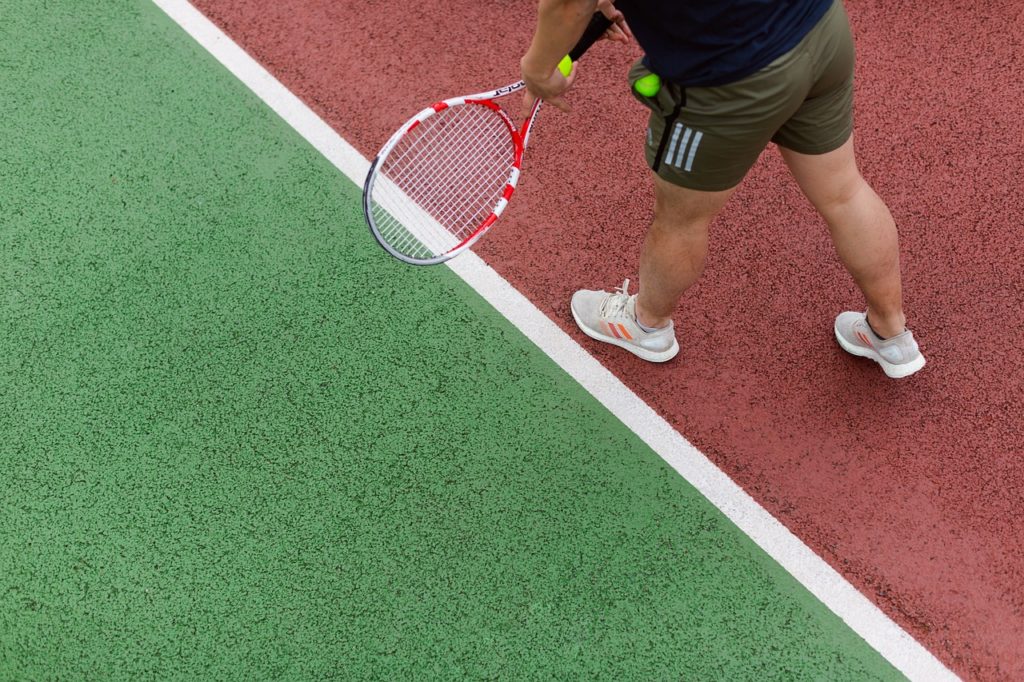It’s very rare you watch a tennis match and see an overweight player. A game that demands such physical exertion, flexibility, and endurance isn’t entirely suited to players who are overweight.
That isn’t to say if you’re carrying a few pounds, you can’t play. One in three US citizens is overweight, and two in every five are obese. In terms of numbers, that’s around 86 million overweight people and 103 million suffering from obesity. Contrast that with the number of active tennis players in the country, 23.6 million, and there’s sure to be some crossover.
Are you a tennis player looking to lose a bit of weight? Or are you one of the 103 million obesity sufferers in the US looking enviously at the courts, hoping to get yourself a racquet one day? If so, we’ve got some help for you, some of it coming directly from top tennis professionals from around the globe.
Jelena Dokic
Dokic was a Wimbledon semi-finalist in 2000 and a French Open doubles finalist in 2001. She reached a World ranking of four in 2002, retiring in 2016 with six career titles to her name. Post-retirement, Dokic suffered from significant weight gain, mainly due to a thyroid issue. Her advice; be happy with who you are and not what others wish you to be. If you want to lose weight to play tennis, do it for the right reasons, not for anyone else. That’s one of the biggest motivations for weight loss – wanting to do it for yourself, not for anyone else.
“This is about feeling good and healthy,” she said of her weight loss. “It’s about eating right, exercising most days, changing my lifestyle for the long term. It’s about feeling good mentally and physically. It’s not just about losing the kilos it’s also about gaining confidence and self-esteem as well.”
Milos Raonic
Milos Raonic reached third in the world in 2016, having reached the final at Wimbledon. He has eight career titles to his name, but he took a two-year break in 2021, only returning to the courts earlier this year. He’s currently ranked 321 in the world, but he’s already a winner in many people’s eyes after battling weight gain. Raonic lost 40lbs in a single month after undergoing a crash diet, and whilst his dieting is extreme, it demonstrates that much of your weight loss journey is conducted in the kitchen, not the gym.
“For a year, all I did was gym and weights, stuff like that. First, I put on a little too much muscle, then I got a little too heavy because I couldn’t do the cardio that I used to,” he explained. “I lost the first forty pounds in the first four weeks. It maybe wasn’t the healthiest thing, but I wasn’t getting there the other way. I ate a standard skirt steak a day (on its own with nothing else) and drank only water.”
Getting Started
You have dietary advice from Raonic and mentality guidance from Dokic, but what are the other components? That’s all well and good if you’re tennis-ready, but what if you’re obese and struggling to get started? Consulting a physician is the first port of call – if you’re planning on dropping a lot of weight, it is best to do it with professional advice. You may find benefits in some form of medical weight loss. For instance, metformin for weight loss that is used off-label for weight loss and weight-related conditions. It acts as an appetite suppressant and is being used increasingly around the United States. Other medications, such as orlistat and wegovy show promise in the battle against the bulge as well. However, your physician will advise you on the best route.
You may simply need to get out and exercise more. By following a balanced diet, perhaps not quite as drastic as Raonic’s, you will cut calorie intake, and then it’s all about chipping away at those extra calories you’re carrying. Try to walk 10,000 steps per day and do exercise that leaves you breathless. It doesn’t have to be tennis, but it does have to burn fat – jog to the store, perhaps, or cycle to work. Those small changes, combined with a positive mindset and balanced diet, should have you shopping for tennis gear and serving aces before you know it.

